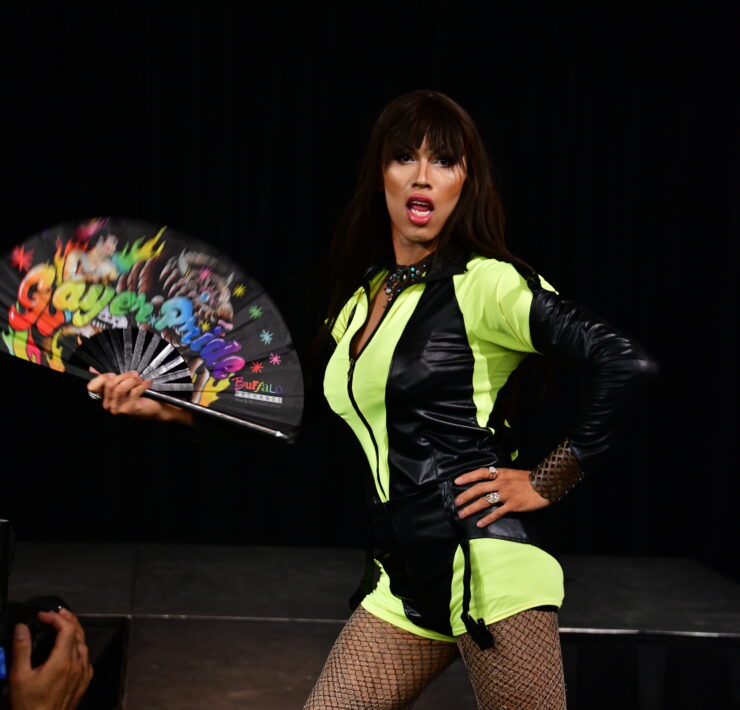Digital Genderqueer: An Interview with Max Mather

We recently spoke to emerging artist Max Mather (he/they) about their art practice. Max grew up in Littleton and is now back in Colorado finishing up an MFA in the Emergent Digital Practices department at University of Denver. His animations were recently featured at “Untitled” at the Denver Art Museum through Denver Digerati.
Can you describe your creative practice?
I am a multimedia and new media artist and student at DU. My work typically engages with the human body and genderqueerness as subjects. In the Emergent Digital Practices department at DU, we use digital software, emergent digital tools, and even technology that is not used in an art context to create artwork.
There are two prongs of my practice. One prong is where I scan my and other genderqueer people’s bodies then digitally manipulate them. The final poses of the figures I alter are retained, but core elements of the surface of the body are changed. I alter the figures so that they are pillowy, clothlike beings. In finished figure work, a lot of the features are smoothed out and blurred. I was attracted to the idea of inflating portions of the figure in the editing process as a way of conceptualizing how genderqueer bodies move around the world. As genderqueer people move through different spaces, the perception of our bodies change, inflating and compressing in some ways and our bodies become these very fluid and evolving things.
The other part of my practice includes performance and installation art. I use props like digital mirrors to reflect people’s bodies in distorted ways. I use these pieces to ask people to reflect on the ways that their bodies are perceived, especially cisgender people who typically do not have to consider how their bodies are being perceived in a space. The distortion of people’s bodies from these artworks may cause a temporary dysphoria and could help people examine the existence of their bodies in space in ways they typically may not.
Can you talk about how the relationship between gender and spirituality informs your practice?
Lately, I have been thinking about the relationship between queerness and spirituality. Specifically, how someone’s spirituality can form how they experience and conceptualize their gender identity and conversely how their gender identity can inform their spirituality.
Spirituality is a topic that I have been conceptualizing my transness through. I was raised Catholic and find Catholic metaphors and motifs work really well to describe my transness. I think this relates to other people’s experiences of transness as well. For example, I had a conversation with a friend of mine who is also trans. One of her biggest affirmations of how she conceptualizes her transess is through the history of Hindu temples for trans women who were believed to be direct lines or descendants of deities in Hindu culture.
There is something that is really engaging to me about the idea of queerness and transness being proclaimed as a type of divinity. On a community level, I would like to keep hearing people’s stories about how their transness and spirituality relate and would like to see literal temples for queer and trans people to celebrate their identities in.
Can you describe a recent art project?
I just finished my longest animation to date. I have always been interested in storytelling as an artform. In my mind, animating was a long-term goal because I thought that animation would need to have very detail oriented environments, motions, and characters. Then, I encountered some animation with low fidelity strategies like low detail sets and characters that float rather than having every motion defined. After seeing these it occurred to me that not everything had to be perfect. With low fidelity in mind, I created an eight minute long animation that was screened as part of “Untitled” at the Denver Art Museum. There were so many moments in the process of making this animation where I realized that I could spend a month on one small aspect of it. I had to find ways around that level of detailed finish so that I could make a finished work. I would get to a certain level of detail and then move onto the next thing because I had a month in total to make the artwork, not a month for each detail.
What’s next for your practice?
I am gearing up to dive into my thesis work for my MFA. Part of that entails putting on a solo show. For this show, I would like to interview and do body scans of more trans and genderqueer people. I also want to hear from people who are willing to share their story about transness as it relates to their spirituality. I would like to bring elements of these scans and interviews into an animation or several animations that relate to the relationship between gender and spirituality. I hope this work will continue to spark conversations where cis people can understand the humanity of trans people on a greater level.
If you are interested in being a part of Max’s new media portraiture, please reach out to him on Instagram @m.mather.creations.











